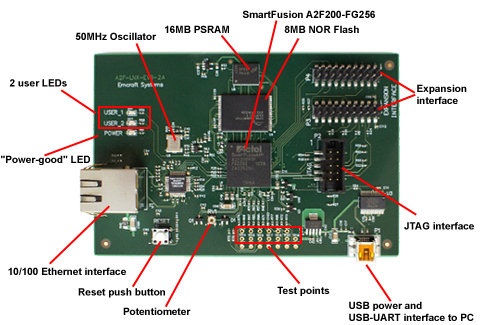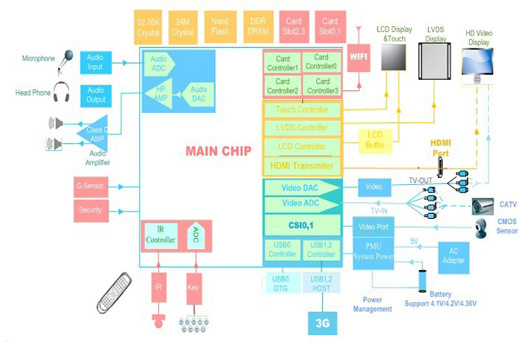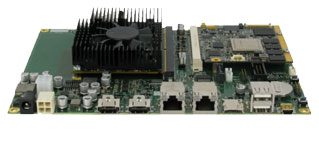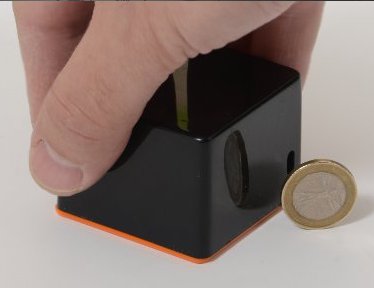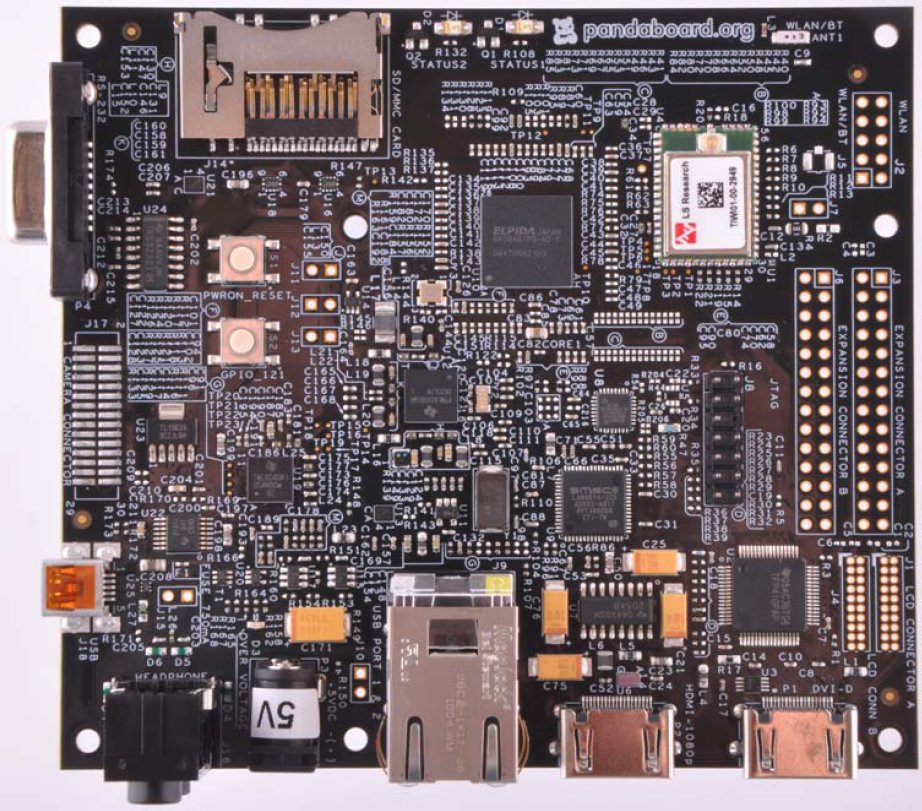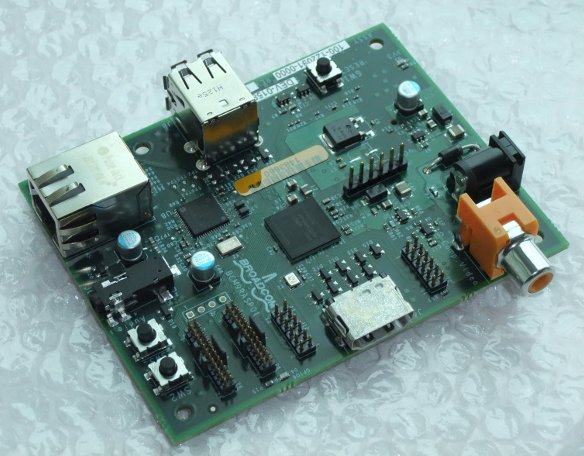There are plenty of low cost Linux development boards based on Cortex A8 or A9 such as the Beaglebone, as well as some devkits based on ARM7 and ARM9 such as SAM9 development kits , but if your application is cost and/or energy sensitive you can also switch to micro-controllers using Cortex M3 or M4 based development boards such as Emcraft SmartFusion devkits. You can run a functional uCLinux system with 1MB of RAM and 1MB of flash including the TCP/IP stack. You need to use uClinux and not directly Linux, because the Cortex M3 doess not have a Memory Management Unit (MMU) and only a Memory Protection Unit (MPU). This can bring some interesting software development challenges such as (apparently random) kernel panics, the lack of fork, memory fragmentation and more. You can check out http://kernel.org/pub/linux/libs/uclibc/Glibc_vs_uClibc_Differences.txt for the main differences between uClibc and Glibc. The instructions to patch and […]
AllWinner A10/A1X Processor Resources, Development Board and SDK
AllWinner A10 (part of A1X series) is an ARM Cortex A8 SoC targetting multimedia products such as tablets, HD STB or digital signage. It is currently found in some low cost Android tablets such as Momo9C and will be used in Rhombus Tech’s Raspberry Pi alternative. The processor features an ARM Cortex A8 clocked at 1.5 Ghz with a Mali-400 GPU. It can support 1080p encoding/decoding, provides HDMI, Component, Composite, VGA and LVDS video outputs, USB2.0 ports, a SATA 2.0 port and more… Here are the key features of the Allwinner A10: VPU (Video Processing Unit) HD Video Decoding (Super HD 2160P/3D Film) Support all popular video formats, including VP8, AVS, H. 264 AVC, VC-1, MPEG-1/2/4, … HD Video Encoding (H.264 High Profile) Support encoding in H.264 format DPU (Display Processing Unit) MULTI-CHANNEL HD displays Built-in HDMI YPbPr, CVBS, VGA LCD interfaces: CPU, RGB, LVDS up to Full HD Memory […]
Linaro 11.12 Release with Kernel 3.1.5
Linaro has just released version 11.12 based on Linux Kernel 3.1.5 and further support for Android 4.0 including graphics hardware acceleration on Snowball and Origen development boards. Here are the highlights of the release: Android Linaro ICS is built with the Linaro toolchain. Linaro ICS is running on all supported boards. DS-5 with Gator is supported in all Linaro Andoid ICS builds. The latest version of libpng (1.5.7) has been integrated in Linaro ICS. An AOSP master build is now available from linaro. ARM® Mali™ Hardware Accelerated Graphics is supported on Origen and Snowball. libjpeg-turbo has been integrated into all Andoid ICS builds. Developer Platform The linux-linaro and lt-panda kernel packages are now automatically generated by the CI build scripts DS-5 with Gator is supported in all Ubuntu LEB builds. XBMC packages, with Gstreamer and OpenGLES support, are now available at the Ubuntu Overlay (supporting only Panda initially) U-Boot-Linaro is […]
Nvidia Announces CARMA Tegra 3 CUDA Development Kit
Nvidia has just unveiled its Tegra 3 development kit, the Nvidia CARMA. The development kit codename has been crowdsourced as Nvidia asked its followers to propose a name and vote for the best name. This development kit particularly targets CUDA, Nvidia parallel computing platform and programming model that enables dramatic increases in computing performance by harnessing the power of the graphics processing unit (GPU). The CARMA hardware has been designed by Seco and features an NVIDIA Tegra 3 ARM Cortex A9 Quad-Core CPU and NVIDIA CUDA GPU QuatroTM. Here are the technical specs for the development kit: CPU NVIDIA Tegra 3 Quad-Core ARM A9 GPU NVIDIA QuadroTM 1000M with 96 CUDA Cores Memory • CPU Memory: 2 GB • GPU Memory: 2 GB Peak Performance 270 Single Precision GFlops CPU – GPU Interface PCIe x4 Gen1 link Network 1x Gigabit Ethernet Storage 1x SATA Connector USB 3x USB 2.0 Display […]
Solid-Run CuBox: Open Source Platform for Android TV, Media Center and NAS Development
Solid-Run CuBox is a miniature open source development platform based on Marvell Armada 510 SoC (88AP510) and aimed at applications such as multimedia, set-top-box, network attached storage (NAS), thin client, digital signage, automation… CuBox measures 55mm x 55mm x 42mm (so it’s not a Cube) and consuming less than 3 watts. The device runs Android 2.2 or Linux 2.6 on an 800MHz Marvell Armada 510 CPU (ARMv7 architecture) with 1GB of DDR3 memory and a microSD slot. It also includes eSATA, USB, infrared, S/PDIF, HDMI and gigabit Ethernet interfaces. CuBox Developer Platform includes the following key features – Marvell Armada 510 SoC – 800 MHz dual issue ARM PJ4 processor, VFPv3, wmmx SIMD and 512KB L2 cache. 1GByte DDR3 at 800MHz 1080p Video Decode Engine OpenGL ES 2.0 graphic engine HDMI 1080p Output (with CEC function) Gigabit Ethernet, SPDIF (optical audio), eSata 3Gbps, 2xUSB 2.0, micro-SD, micro-USB (console) Standard Infra-red receiver […]
5th Linux BSP Release for Snowball Development Board
Igloo Community – the team developing for ST Ericsson Snowball Nova A9500 development board – has released the fifth version of the Linux BSP for the board and this version nearly fully support all features of the board. It can be downloaded at http://igloocommunity.org/download/linaro/images/20111209/. ChangeLog since last release: Based on Linaro Ubuntu 11.11 desktop filesystem Accelerometer and barometer support for all board revisions GPS support Enhancements to the default kernel config (NFS, /proc/config.gz support) Enhanced display support Add support for new connectivity module versions Main supported features: Based on Linux 3.0.0 and the Linaro Ubuntu desktop file system HDMI/DVI-D display support Graphics acceleration with the Mali 400 GPU Bluetooth support GPS support Ethernet and Wireless connectivity microSD card support Sensors (accelerometer, magnetometer, gyroscope, barometer) Limited USB OTG host functionality Features to be included in future releases: Multimedia acceleration Better USB OTG host support Known issues: USB OTG host mode is […]
New Development Board: Pandaboard ES with TI OMAP4460
Somehow I’ve missed the announcement of the Pandaboard ES – a new version of the Pandaboard low cost development board – last month. The Pandaboard ES is built around OMAP4460 processor running at 1.2 GHz with 1GB RAM and an SD/MMC card slot. It features onboard 10/100MBit Ethernet, Wifi, Bluetooth, several video output ports (HDMI, DVI-D, LCD Expansion and DSI), audio input/audio, several expansion ports (USB 2.0 OTG, USB 2.0 host, GPIO header, camera header..) and debug ports (JTAG, UART, 2 status LEDs, 1 GPIO button and sysboot switch). It has the same form factor as the original Pandaboard (114.3mm x 101.6mm) and weights 81.5g instead of 74g for the Pandaboard. The cost is however slightly higher at 182 USD (recommended price) vs. 174 USD for the Pandaboard. To help you choose which board is best for you, I’ve created a table comparing Pandaboard and Pandaboard ES specifications and features. […]
400 Free Raspberry Pi (Development) Boards for Qt 5 Developers
Remember the 25 – 35 USD ARM11 board Raspberry Pi ? Nokia is now getting involved and plans to speed up Qt 5 development on this nice little hardware. The Raspberry Pi Foundation has announced that Nokia would purchase 400 boards next month and give them away to Qt 5 developers who are willing to port software, develop apps, and test and improve the Qt 5 Linux stack. Mostly likely it will be the “high-end” 35 USD version with Ethernet support and 2556 MB RAM as show below. Beside its ridiculously cheap price, the board key features include Linux support, embedded GPU and OpenGL ES libraries that makes it a usable multimedia device capable of outputting 1080p. Nokia and ICS engineers have already started to port Qt to the Raspberry Pi board using the alpha boards. You can see the Qt Quick 2 emitter demo below running on one of the […]


